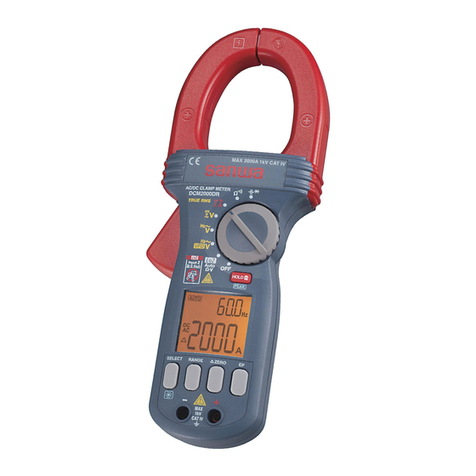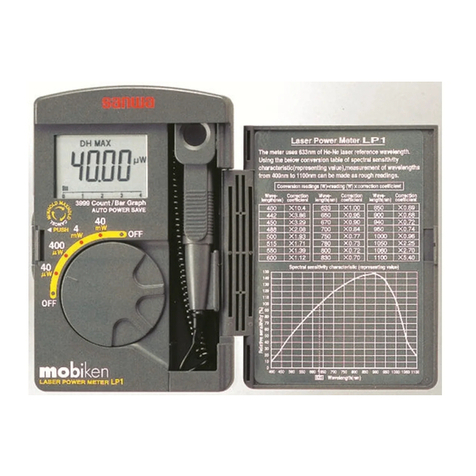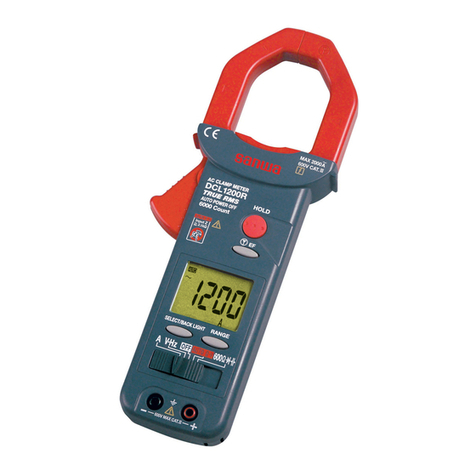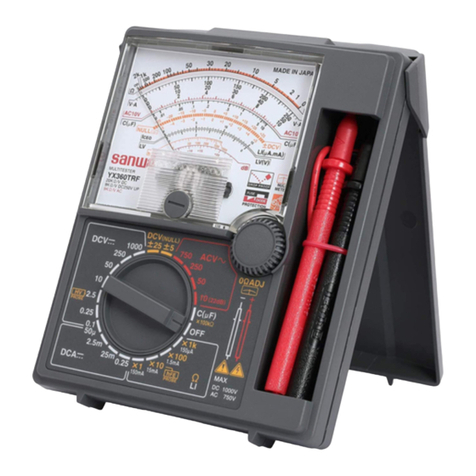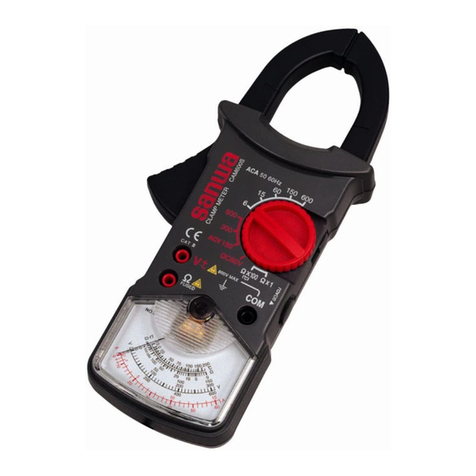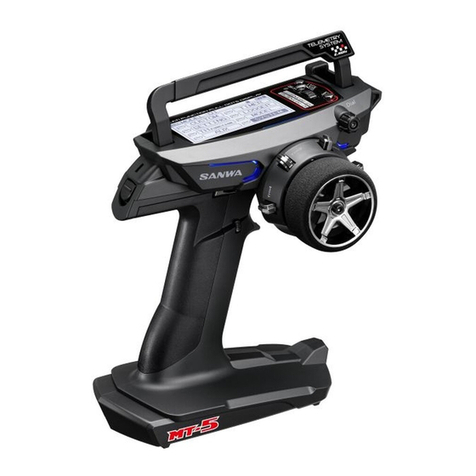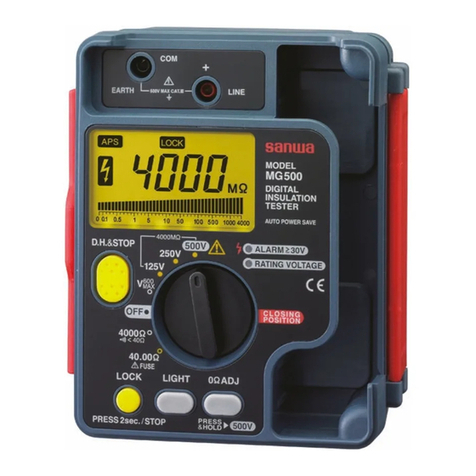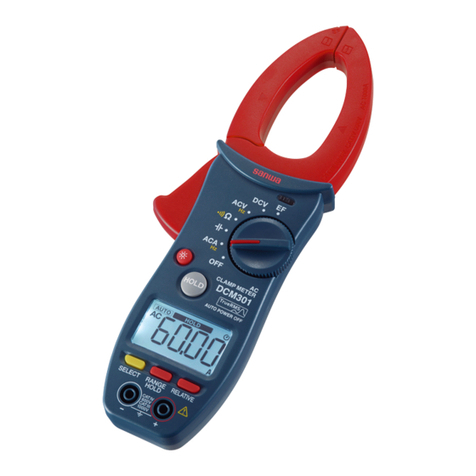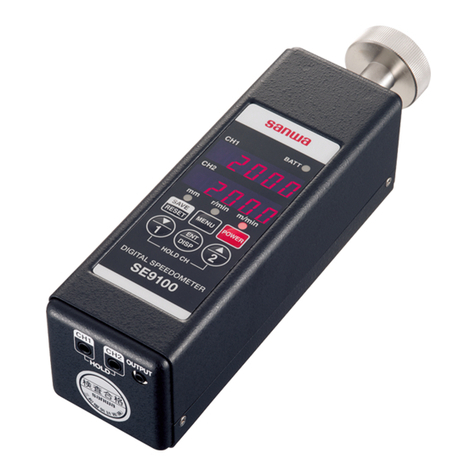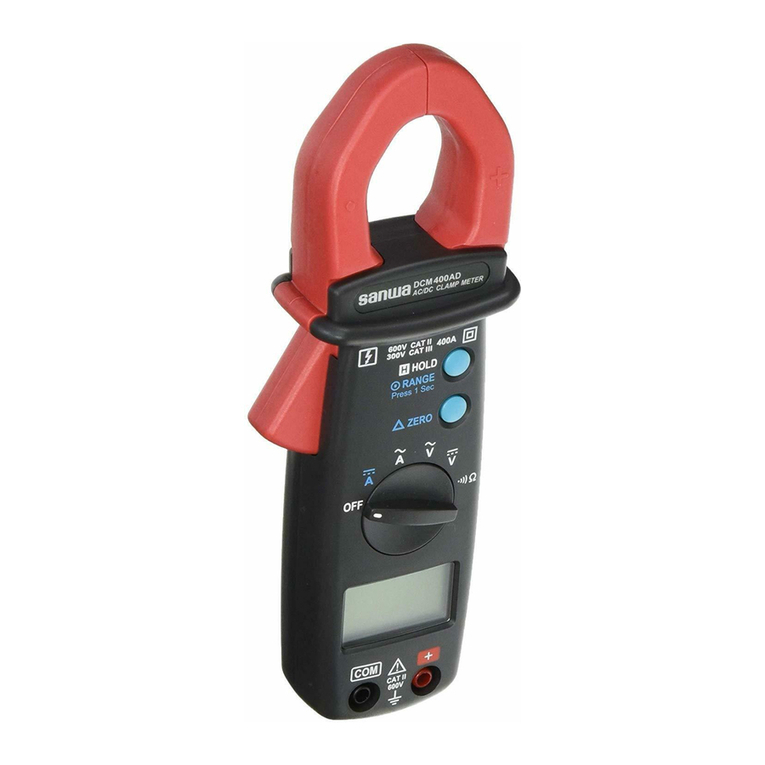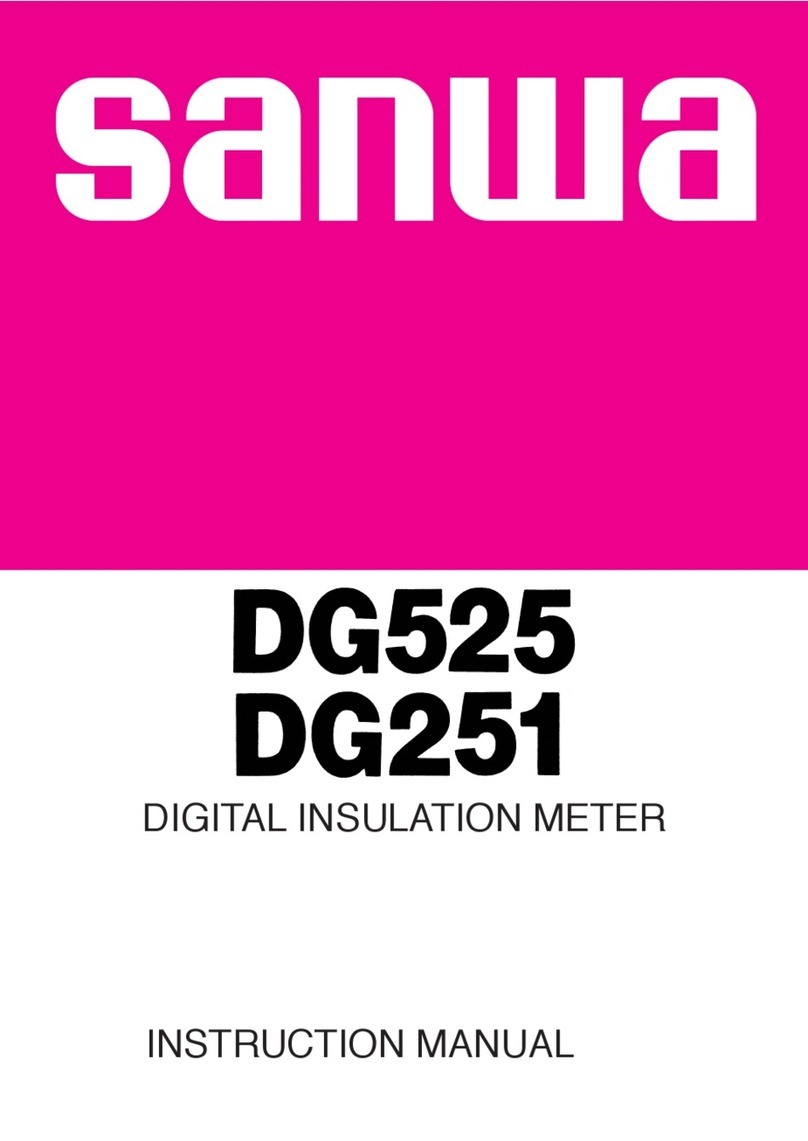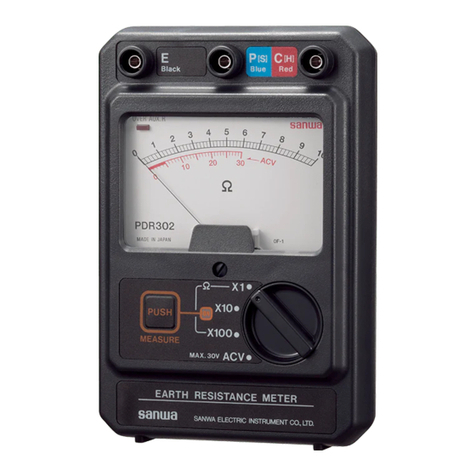―2――1―
[1] SAFETY PRECAUTIONS
*Before use, read the following safety precautions.
This instruction manual explains how to use your digital multimeter
PC710. Before using, read through this manual to reduce the risk
of fire , electric shock, and/or injury. And save it together with the
product so that you can refer to the manual as necessary.
Use the instrument only as specified in this manual or the protection
provided by the instrument may be impaired.
The instructions given under the headings of " WARNING" and
must be followed to prevent accidental burn andelectric shock.
1-1 Explanation of Warning Symbols
The meanings of the symbols used in this manual and attached to
the product are as follows.
:Extremely-important instructions for safe use
・
WARNING identifies conditions and actions that could result in
accidental burn and electric shock.
・
CAUTION identifies conditions and actions that could cause
damage the instrument.
:Do not touch! Possible high voltage.
:Ground :Diode Hz:Frequency
:Fuse :Beep :Logic-Level Frequency
:Direct Current(DC) :Capacitor :Duty Cycle
:Alternate Current (AC) : Nano-Siemens (Conductance)
:Resistance :Temperature :Backlight
EF:Electric Field :Double Insulation or Reinforced
1-2 Warning Instructions for Safe Use
1. Do not use the instrument if the meter or test leads look damaged.
2. Be sure to use the specified fuse.
Neither use unspecified fuse nor short-circuit the fuse holder.
3. Do not apply higher voltage or current than the max. ratings by each
function. (See 1-3)
4. Use caution when working with voltages above 33 V ac rms, 46.7 V ac
peak, or 70 V dc. These voltages pose a shock hazard.
5. Do not use the meter to measure lines that may have inductive voltage
or surge voltage (e.g. motors) because the input voltage may exceed the
maximum rated voltage.
6. Never operate the meter with the case or battery lid removed.
7. Remove test leads from the meter before opening the meter case for
replacing the battery or fuse.
8. Never attempt to repair or modify the instrument, except for battery and fuse
replacement.
9. Do not use any unspecified type of test leads.
10. Keep your fingers behind the finger guards of the test leads while
measurement.
11. Connect the common test lead (Black) before you connect the live test lead
(Red). Disconnect the live test lead first.
12. Make sure the function, range, and measuring terminals are properly set.
13. Do not switch the function, range, or the plugs to another while
measurement.
14. Do not operate the meter when it is wet or with wet hands.
WARNING
Incorrect measurement may be performed in a ferromagnetic or
intense electric field near transformers, high-current circuits, and
radio equipments.
CAUTION

